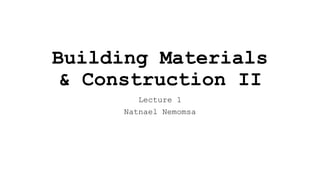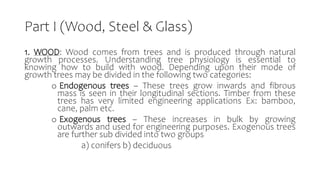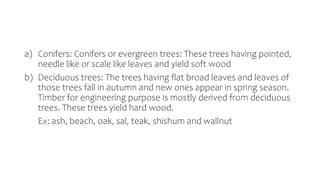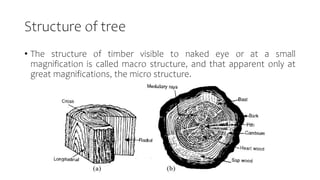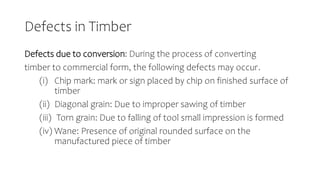The document provides information on wood as a building material, including its structure, properties, seasoning, defects, and grading. It discusses the following key points in 3 sentences:
Wood comes from two types of trees - endogenous trees which grow inwards and exogenous trees which grow outwards. Exogenous trees are further divided into conifers like pine and fir, and deciduous trees like oak and teak that are most commonly used for engineering purposes. The document outlines various methods for seasoning wood including natural air drying, kiln drying, and chemical treatments to reduce moisture content and prevent defects before use in construction.
